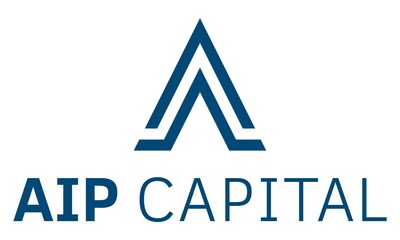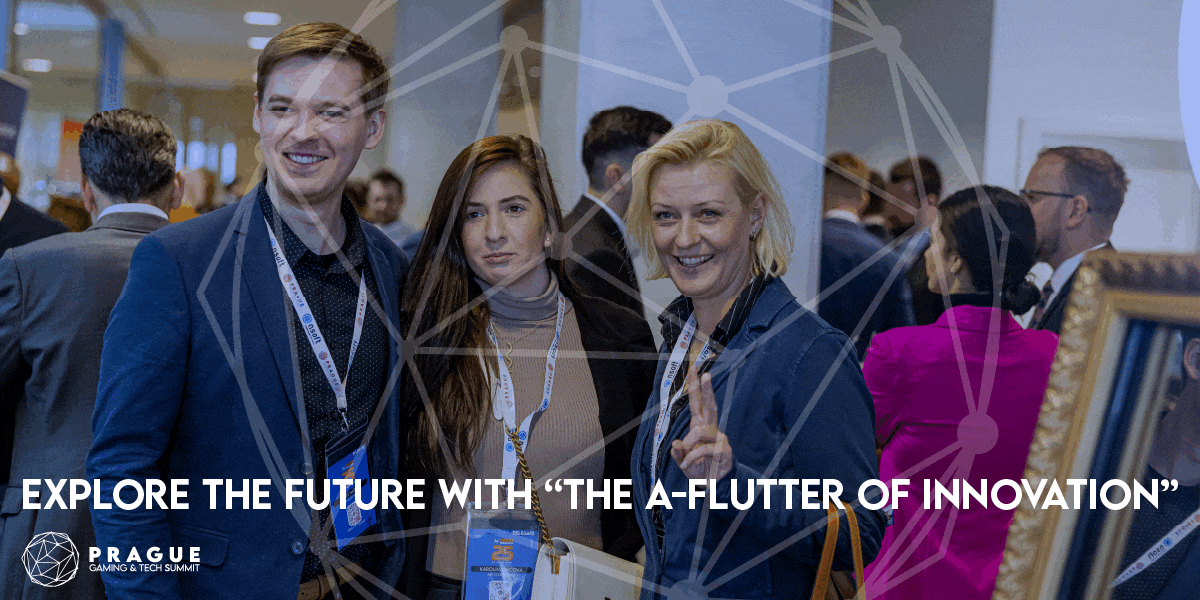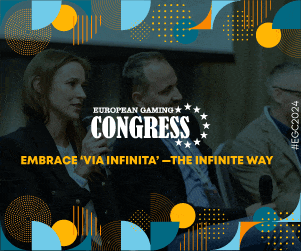Fintech PR
Partnership to focus on Alzheimer’s disease, breast cancer, diabetes, obesity

 Reading Time: 8 minutes
Reading Time: 8 minutes
Centene Corporation (NYSE: CNC) and Washington University School of Medicine in St. Louis announced today a partnership to transform and accelerate research into treatments for Alzheimer’s disease, breast cancer, diabetes and obesity. All are common, debilitating and often deadly diseases that affect millions of people worldwide, at all levels of income.
As part of the partnership, Centene will fund up to $100 million over 10 years in research at Washington University. The funding will galvanize the School of Medicine’s Personalized Medicine Initiative, which aims to develop customized disease treatment and prevention for patients. Innovations that arise from the initiative will be commercialized through the ARCH Personalized Medicine Initiative, a joint venture between the School of Medicine and Centene. Reflecting the philosophy of both institutions, ARCH is designed to accelerate the development and implementation of affordable and accessible health solutions to the public using the intellectual property developed from this research.
“We share the goal of helping to improve the health of our communities through research, education and customized treatment for people suffering from chronic illnesses,” said Michael F. Neidorff, chairman and CEO for Centene. “We believe personalized medicine is the path to ensure patients get the targeted health care they need to fight disease, and we look forward to partnering with such a renowned medical school to initially focus on four diseases that impact millions of Americans, including many of our health plan members.”
The investment will leverage the university’s cutting-edge research and biomedical capabilities, including state-of-the-art technologies such as CRISPR, and internationally known scientists in the areas of the microbiome, immunomodulatory therapies, cancer genomics, neurodegeneration, cellular reprogramming, chemical biology, informatics and others. In addition, the funds will strengthen resources at more than a dozen centers and institutes at the School of Medicine, including the Edison Family Center for Genome Sciences & Systems Biology; the Andrew M. and Jane M. Bursky Center for Human Immunology and Immunotherapy Programs; Siteman Cancer Center at Barnes-Jewish Hospital and Washington University School of Medicine; the Elizabeth H. and James S. McDonnell III Genome Institute; the Institute for Informatics; and the Center of Regenerative Medicine.
“We will be bringing together world-class resources and intellectual horsepower from every basic and clinical scientific discipline to urgently accelerate the timeline for developing therapies that are more precisely targeted, with aspirations to do so in the next five to seven years,” said David H. Perlmutter, MD, executive vice chancellor for medical affairs, the George and Carol Bauer Dean, and the Spencer T. and Ann. W. Olin Distinguished Professor at the School of Medicine. “I believe the most important advances that will evolve from the personalized medicine paradigm will come from harnessing genome engineering technologies to build better model systems of each human disease, and utilizing deep genomic and clinical characterization to enable more effective and less expensive clinical trials.”
Perlmutter continued, “The partnership supports our global leadership in understanding sequence variants in biological systems that will pave the way for new therapeutic targets, as well as learning more about our own innate biology. Once personalized medicine becomes common practice, health-care workers may examine each patient’s genome — as well as information regarding his or her environment, lifestyle and social network — to identify a customized, affordable approach to optimizing health and medical care.”
Centene and Washington University will host a press briefing at a later date to be determined.
About Centene Corporation
Centene Corporation, a Fortune 100 company, is a diversified, multi-national healthcare enterprise that provides a portfolio of services to government sponsored and commercial healthcare programs, focusing on under-insured and uninsured individuals. Many receive benefits provided under Medicaid, including the State Children’s Health Insurance Program (CHIP), as well as Aged, Blind or Disabled (ABD), Foster Care and Long-Term Services and Supports (LTSS), in addition to other state-sponsored programs, Medicare (including the Medicare prescription drug benefit commonly known as “Part D”), dual eligible programs and programs with the U.S. Department of Defense. Centene also provides healthcare services to groups and individuals delivered through commercial health plans. Centene operates local health plans and offers a range of health insurance solutions. It also contracts with other healthcare and commercial organizations to provide specialty services including behavioral health management, care management software, correctional healthcare services, dental benefits management, commercial programs, home-based primary care services, life and health management, vision benefits management, pharmacy benefits management, specialty pharmacy and telehealth services.
Centene uses its investor relations website to publish important information about the Company, including information that may be deemed material to investors. Financial and other information about Centene is routinely posted and is accessible on Centene’s investor relations website, http://www.centene.com/investors.
About Washington University School of Medicine in St. Louis
Washington University School of Medicine’s 1,500 faculty physicians also are the medical staff of Barnes-Jewish and St. Louis Children’s hospitals. The School of Medicine is a leader in medical research, teaching and patient care, ranking among the top 10 medical schools in the nation by U.S. News & World Report. Through its affiliations with Barnes-Jewish and St. Louis Children’s hospitals, the School of Medicine is linked to BJC HealthCare.
Cautionary Statement on Forward-Looking Statements
All statements, other than statements of current or historical fact, contained in this communication are forward-looking statements. Without limiting the foregoing, forward-looking statements often use words such as “believe,” “anticipate,” “plan,” “expect,” “estimate,” “intend,” “seek,” “target,” “goal,” “may,” “will,” “would,” “could,” “should,” “can,” “continue” and other similar words or expressions (and the negative thereof). We intend such forward-looking statements to be covered by the safe-harbor provisions for forward-looking statements contained in the Private Securities Litigation Reform Act of 1995, and Centene Corporation is including this statement for purposes of complying with these safe-harbor provisions. In particular, these statements include, without limitation, statements about Centene’s future operating or financial performance, market opportunity, growth strategy, competition, expected activities in completed and future acquisitions, including statements about the impact of Centene’s proposed acquisition of WellCare Health Plans, Inc. (the “WellCare Transaction”), Centene’s recent acquisition (the “Fidelis Care Transaction”) of substantially all the assets of New York State Catholic Health Plan, Inc., d/b/a Fidelis Care New York (“Fidelis Care“), investments and the adequacy of Centene’s available cash resources.
These forward-looking statements reflect Centene’s current views with respect to future events and are based on numerous assumptions and assessments made by us in light of Centene’s experience and perception of historical trends, current conditions, business strategies, operating environments, future developments and other factors Centene believes appropriate. By their nature, forward-looking statements involve known and unknown risks and uncertainties and are subject to change because they relate to events and depend on circumstances that will occur in the future, including economic, regulatory, competitive and other factors that may cause Centene’s or its industry’s actual results, levels of activity, performance or achievements to be materially different from any future results, levels of activity, performance or achievements expressed or implied by these forward-looking statements. These statements are not guarantees of future performance and are subject to risks, uncertainties and assumptions.
All forward-looking statements included in this filing are based on information available to us on the date of this communication. Except as may be otherwise required by law, Centene undertakes no obligation to update or revise the forward-looking statements included in this communication, whether as a result of new information, future events or otherwise, after the date of this filing. You should not place undue reliance on any forward-looking statements, as actual results may differ materially from projections, estimates, or other forward-looking statements due to a variety of important factors, variables and events including, but not limited to, the following: (i) the risk that regulatory or other approvals required for the WellCare Transaction may be delayed or not obtained or are obtained subject to conditions that are not anticipated that could require the exertion of management’s time and Centene’s resources or otherwise have an adverse effect on Centene; (ii) the risk that Centene’s stockholders do not approve the issuance of shares of Centene common stock in the WellCare Transaction; (iii) the risk that WellCare’s stockholders do not adopt the merger agreement; (iv) the possibility that certain conditions to the consummation of the WellCare Transaction will not be satisfied or completed on a timely basis and accordingly the WellCare Transaction may not be consummated on a timely basis or at all; (v) uncertainty as to the expected financial performance of the combined company following completion of the WellCare Transaction; (vi) the possibility that the expected synergies and value creation from the WellCare Transaction will not be realized, or will not be realized within the expected time period; (vii) the exertion of management’s time and Centene’s resources, and other expenses incurred and business changes required, in connection with complying with the undertakings in connection with any regulatory, governmental or third party consents or approvals for the WellCare Transaction; (viii) the risk that unexpected costs will be incurred in connection with the completion and/or integration of the WellCare Transaction or that the integration of WellCare will be more difficult or time consuming than expected; (ix) the risk that potential litigation in connection with the WellCare Transaction may affect the timing or occurrence of the WellCare Transaction or result in significant costs of defense, indemnification and liability; (x) a downgrade of the credit rating of Centene’s indebtedness, which could give rise to an obligation to redeem existing indebtedness; (xi) unexpected costs, charges or expenses resulting from the WellCare Transaction; (xii) the possibility that competing offers will be made to acquire WellCare; (xiii) the inability to retain key personnel; (xiv) disruption from the announcement, pendency and/or completion of the WellCare Transaction, including potential adverse reactions or changes to business relationships with customers, employees, suppliers or regulators, making it more difficult to maintain business and operational relationships; and (xv) the risk that, following the WellCare Transaction, the combined company may not be able to effectively manage its expanded operations.
Additional factors that may cause actual results to differ materially from projections, estimates, or other forward-looking statements include, but are not limited to, the following: (i) Centene’s ability to accurately predict and effectively manage health benefits and other operating expenses and reserves; (ii) competition; (iii) membership and revenue declines or unexpected trends; (iv) changes in healthcare practices, new technologies, and advances in medicine; (v) increased healthcare costs, (vi) changes in economic, political or market conditions; (vii) changes in federal or state laws or regulations, including changes with respect to income tax reform or government healthcare programs as well as changes with respect to the Patient Protection and Affordable Care Act and the Health Care and Education Affordability Reconciliation Act, collectively referred to as the Affordable Care Act (“ACA”), and any regulations enacted thereunder that may result from changing political conditions or judicial actions, including the ultimate outcome of the District Court decision in “Texas v. United States of America” regarding the constitutionality of the ACA; (viii) rate cuts or other payment reductions or delays by governmental payors and other risks and uncertainties affecting Centene’s government businesses; (ix) Centene’s ability to adequately price products on federally facilitated and state-based Health Insurance Marketplaces; (x) tax matters; (xi) disasters or major epidemics; (xii) the outcome of legal and regulatory proceedings; (xiii) changes in expected contract start dates; (xiv) provider, state, federal and other contract changes and timing of regulatory approval of contracts; (xv) the expiration, suspension, or termination of Centene’s contracts with federal or state governments (including but not limited to Medicaid, Medicare, TRICARE or other customers); (xvi) the difficulty of predicting the timing or outcome of pending or future litigation or government investigations; (xvii) challenges to Centene’s contract awards; (xviii) cyber-attacks or other privacy or data security incidents; (xix) the possibility that the expected synergies and value creation from acquired businesses, including, without limitation, the Fidelis Care Transaction, will not be realized, or will not be realized within the expected time period; (xx) the exertion of management’s time and Centene’s resources, and other expenses incurred and business changes required in connection with complying with the undertakings in connection with any regulatory, governmental or third party consents or approvals for acquisitions, including the Fidelis Care Transaction; (xxi) disruption caused by significant completed and pending acquisitions, including, among others, the Fidelis Care Transaction, making it more difficult to maintain business and operational relationships; (xxii) the risk that unexpected costs will be incurred in connection with the completion and/or integration of acquisition transactions, including, among others, the Fidelis Care Transaction; (xxiii) changes in expected closing dates, estimated purchase price and accretion for acquisitions; (xxiv) the risk that acquired businesses, including Fidelis Care, will not be integrated successfully; (xxv) the risk that, following the Fidelis Care Transaction, Centene may not be able to effectively manage its expanded operations; (xxvi) restrictions and limitations in connection with Centene’s indebtedness; (xxvii) Centene’s ability to maintain the Centers for Medicare and Medicaid Services (CMS) Star ratings and maintain or achieve improvement in other quality scores in each case that can impact revenue and future growth; (xxviii) availability of debt and equity financing, on terms that are favorable to us; (xxxix) inflation; and (xxx) foreign currency fluctuations.
This list of important factors is not intended to be exhaustive. We discuss certain of these matters more fully, as well as certain other factors that may affect Centene’s business operations, financial condition and results of operations, in Centene’s filings with the Securities and Exchange Commission (the “SEC”), including Centene’s Annual Report on Form 10-K, quarterly reports on Form 10-Q and current reports on Form 8-K. Due to these important factors and risks, Centene cannot give assurances with respect to Centene’s future performance, including without limitation Centene’s ability to maintain adequate premium levels or Centene’s ability to control its future medical and selling, general and administrative costs.
SOURCE: Centene Corporation
Fintech PR
CGTN: President Xi’s Southeast Asia visits set to inject new impetus into regional development
Ahead of Chinese President Xi Jinping’s state visits to Vietnam, Malaysia and Cambodia, CGTN published an article on how China follows the principles of amity, sincerity, mutual benefit and inclusiveness in its neighborhood diplomacy and how it strives to build a community with a shared future with neighboring countries.
BEIJING, April 12, 2025 /PRNewswire/ — Chinese President Xi Jinping will pay state visits to three Southeast Asian countries – Vietnam, Malaysia and Cambodia –next week, the Chinese Foreign Ministry announced on Friday.
The five-day tour to the neighboring countries, lasting from Monday to Friday, will be Xi’s first trip abroad this year.
The visits will come days after the Chinese leader called for building a community with a shared future with China’s neighboring countries at a recent central conference on neighborhood work.
Neighboring countries are China’s priority in its diplomacy, and China and Southeast Asian countries are good neighbors, good friends and good partners with a shared future, said Lin Jian, spokesperson for the Chinese Foreign Ministry, on Friday.
The upcoming visits by the Chinese president bears major importance for China’s relations with Vietnam, Malaysia and Cambodia and the Association of Southeast Asian Nations (ASEAN) as a whole, Lin told a daily press briefing.
The visits are also expected to inject new impetus into the peace and development of the region and the world, he added.
China and Vietnam: Camaraderie plus brotherhood
From Monday to Tuesday, Xi will travel to Vietnam for a fourth state visit as general secretary of the Communist Party of China Central Committee and Chinese president. The trip coincides with the 75th anniversary of diplomatic ties between China and Vietnam, two socialist neighbors that have forged an enduring bond as “camaraderie plus brotherhood.”
Xi last visited Vietnam in December 2023, when both sides agreed to build a China–Vietnam community with a shared future that carries strategic significance, lifting bilateral relations to a new stage.
Economic and trade cooperation between China and Vietnam has developed steadily in recent years. China has been Vietnam’s largest trading partner since 2004, while Vietnam has been China’s largest trading partner within ASEAN since 2016. Bilateral trade volume has exceeded $200 billion for four consecutive years, reaching $260.65 billion in 2024, a year-on-year increase of 13.5 percent, showed data of the Chinese Commerce Ministry.
Chinese enterprises’ direct investment in Vietnam surpassed $2.5 billion in 2024, sustaining swift growth and making Vietnam an important overseas investment destination for China, according to the ministry.
China and Malaysia: Models of win-win cooperation
The Chinese president last visited Malaysia in 2013, when the two countries elevated ties to a comprehensive strategic partnership. Then a decade later, Xi and Malaysian Prime Minister Anwar Ibrahim reached an agreement in Beijing on jointly building a China–Malaysia community with a shared future.
In recent years, China and Malaysia have maintained high-level development in relations. Both sides have had frequent high-level interactions, continued to consolidate political mutual trust, achieved fruitful outcomes in practical cooperation, setting an example of mutual understanding and win-win cooperation between neighboring countries.
China–Malaysia collaboration has been expanding across the horizon. China has remained Malaysia’s largest trading partner for 16 consecutive years, with the volume hitting an all-time high of $212.04 billion in 2024. In recent years, Malaysia’s tropical fruits such as durian, mangosteen and jackfruit have become increasingly popular among Chinese consumers.
China and Malaysia are important developing countries and emerging economies in the Asia-Pacific. The upcoming visit by the Chinese leader will mark an important milestone in promoting the upgrading of the relations between China and Malaysia, said Lin, the Chinese Foreign Ministry spokesperson.
Through this visit, China hopes to further strengthen coordination with Malaysia on regional and international issues, move the bilateral relations towards the direction of building a high-level strategic China–Malaysia community with a shared future and make new contributions to the growing strength and unity of the Global South and peace and stability in the region, he said.
China and Cambodia: Ironclad friendship
Xi last paid a state visit to Cambodia in 2016. In September 2023, Cambodian Prime Minister Hun Manet chose China as his first official overseas destination after assuming office, a gesture reflecting Cambodia’s diplomatic priority. During their meeting back then, Xi and Hun Manet pledged to further carry forward the ironclad friendship between China and Cambodia.
In recent years, China and Cambodia have continued to deepen strategic mutual trust, enrich the “Diamond Hexagon” cooperation framework, make steady progress in the building of the Industrial Development Corridor and the “Fish and Rice Corridor,” achieve fruitful outcomes in cooperation across the board.
China has been Cambodia’s largest foreign investor and trading partner for several consecutive years. The China-Cambodia Free Trade Agreement, which came into effect on January 1, 2022, marks Cambodia’s first-ever bilateral free trade arrangement. In 2024, the trade volume between Cambodia and China reached $15.1 billion, surging 23.8 percent year on year.
Lin said, during the upcoming visit by the Chinese president, the two sides will have discussions on elevation of bilateral relations and have an in-depth exchange of views on five areas including political mutual trust, mutually beneficial cooperation, security, cultural and people-to-people exchanges and strategic coordination.
View original content:https://www.prnewswire.co.uk/news-releases/cgtn-president-xis-southeast-asia-visits-set-to-inject-new-impetus-into-regional-development-302427011.html

Fintech
Fintech Pulse: Your Daily Industry Brief – April 11, 2025 (Featuring Synapse, Yotta, Citadel Securities, Block, Citi, Valley Bank)

In the ever-evolving world of financial technology, every day brings new challenges, opportunities, and lessons that shape the industry landscape. Today’s briefing offers a comprehensive analysis and op-ed-style commentary on the latest news shaping fintech—ranging from high-stakes fraud allegations to groundbreaking trends in fintech banking and regulatory accountability. As the industry continues to grow, stories like these not only influence market sentiment but also redefine the role of technology and innovation in finance. In this article, we delve into five major pieces of news, offering detailed insights on each story, as well as an opinion-driven perspective on what these developments mean for the future of fintech.
In this comprehensive review, we examine the following key areas:
-
Fraud and the Promise of Artificial Intelligence: Unpacking the recent case involving a fintech founder and the controversial use of human-powered AI in an ostensibly automated shopping app.
-
Banking Reinvented: An in-depth analysis of the evolving landscape of fintech banking and its impact on personal savings and risk management.
-
Compensation and Competition in Talent Acquisition: A look into how fintech companies are attracting top engineering talent through competitive salaries, with a particular focus on Citadel Securities.
-
Regulation and Compliance in a Digital Age: An exploration of recent regulatory fines and what they reveal about the challenges fintech firms face in the areas of anti-money laundering and corporate governance.
-
Traditional Banks and Fintech Collaboration: Insight into how legacy financial institutions like Citi and Valley Bank are leveraging fintech partnerships to drive innovation and streamline their operations.
This article is more than just a news summary—it is an invitation to examine the underlying dynamics fueling these headlines and to reflect on the broader implications for the fintech ecosystem. Join us as we explore these stories in depth, highlighting the opportunities and challenges that will help define tomorrow’s financial world.
I. Fraud and the Promise of Artificial Intelligence: A Troubling Frontier
The Case That Sparked Controversy
A recent headline from TechCrunch detailed a staggering revelation in the fintech world—a prominent fintech founder has been charged with fraud after an AI-driven shopping app, which many assumed was powered entirely by sophisticated algorithms, was found to be substantially operated by human workers located in the Philippines. This news has sent shockwaves across the industry, raising critical questions about transparency, ethics, and the true nature of “artificial intelligence” in today’s fintech applications.
Source: TechCrunch
A Closer Look at the Incident
At first glance, the concept of an AI-powered shopping app fits perfectly within the narrative of cutting-edge fintech innovation. The promise of artificial intelligence is to streamline operations, create personalized user experiences, and ultimately, redefine the retail shopping experience. However, when the facade of automation is peeled back to reveal a team of human workers manually handling tasks, it calls into question the integrity of the product and the ethical responsibilities of its founders.
The ramifications of this disclosure are significant, both legally and reputationally. In an era where trust and authenticity are paramount in digital financial services, any form of misrepresentation can undermine consumer confidence and jeopardize investor support. The case serves as a sobering reminder that innovation must be matched by accountability.
Ethical Implications for the Fintech Community
In the fintech sector, where technology and trust intersect, the misuse of the term “AI” can lead to market distortions and incorrect consumer expectations. The fraud charge against the fintech founder draws attention to several ethical issues:
-
Transparency in Technology: Companies must be clear about the capabilities of their platforms. Overstating the role of artificial intelligence not only misleads users but also masks the need for substantial human intervention.
-
Accountability and Oversight: Regulatory frameworks must catch up with the rapid pace of technological advancements to ensure that companies cannot hide behind complex algorithms to avoid scrutiny.
-
Trust in Digital Transformation: As consumers become more reliant on fintech solutions, the expectation is that these tools will provide both security and reliability. Fraudulent practices risk undermining the public’s faith in digital transformation efforts.
Industry Response and Future Outlook
The fallout from this incident has been swift and far-reaching. Investors are now calling for more rigorous audits of fintech offerings, and regulatory bodies are poised to tighten the monitoring of claims made by companies in the space. In a rapidly digitalizing financial landscape, this case represents a pivotal moment for the industry—forcing a reexamination of how technology is marketed and deployed.
From an op-ed perspective, this episode should be viewed as a call to arms for fintech innovators. The industry must pivot from short-term gains achieved through deceptive practices towards long-term value built on integrity and transparency. Only then can fintech truly harness the promise of artificial intelligence to revolutionize finance while safeguarding consumer interests.
II. The New Landscape of Fintech Banking: Revolutionizing Saving and Risk Management
A Deep Dive into the Changing Dynamics of Banking
Bloomberg recently ran an in-depth feature exploring how fintech banking is transforming the traditional notions of saving and risk management. The article, centered on innovative players like Synapse, Evolve, and Yotta, illustrates how these firms are challenging the age-old principles of banking by making saving a riskier yet more lucrative venture.
Source: Bloomberg
Reimagining Personal Savings
Traditionally, saving money in a bank was associated with security and low risk—an approach rooted in decades-old financial principles. However, fintech disruptors are now turning this notion on its head by incorporating riskier, technology-driven strategies to offer higher returns. This evolution in banking is driven by several factors:
-
Technological Innovation: The use of advanced algorithms to manage customer funds in real time allows for dynamic risk assessment and potentially higher yields.
-
Customer-Centric Approaches: Modern consumers are attracted to products that offer more than just security; they demand engagement, transparency, and the promise of substantial returns.
-
Market Disruption: By challenging the normative boundaries of risk, companies like Synapse, Evolve, and Yotta are not only reshaping the financial landscape but also pushing traditional banks to rethink their own strategies.
The Mechanics Behind Fintech Savings
At the heart of this transformation is the integration of technology with financial strategy. Fintech banking leverages sophisticated data analytics and machine learning algorithms to predict market trends and optimize savings strategies. For instance, these platforms can analyze vast datasets to identify low-risk investment opportunities or dynamically adjust the parameters of saving products to maximize returns.
From an industry standpoint, this integration of risk and innovation represents both a challenge and an opportunity. On one hand, exposing savers to greater risk necessitates robust risk management frameworks and customer education initiatives. On the other hand, it offers the possibility of unlocking value that traditional banking systems have long been unable to deliver.
The Broader Implications of a Riskier Savings Paradigm
The shift towards a risk-enhanced savings model has far-reaching implications. For customers, the promise of higher returns is enticing, yet it comes with the potential for greater financial volatility. This duality underscores the need for balanced, informed decision-making when adopting such products. Moreover, the move represents a significant cultural shift within the banking industry—a transformation that blurs the lines between conventional safety and the dynamic nature of modern digital finance.
In many ways, this new approach can be seen as a natural evolution of the fintech revolution, where the integration of technology and finance leads to novel product offerings that challenge traditional market norms. However, it also serves as a reminder that innovation in the financial realm is inherently risky, and that both customers and companies must navigate a fine line between bold moves and prudent risk management.
A Forward-Looking Analysis
From an op-ed standpoint, the evolution of fintech banking suggests that the future of saving lies not in rigid security but in adaptability and informed risk-taking. Financial institutions that can effectively blend these elements will be best positioned to thrive in an increasingly complex and competitive landscape. For fintech startups, the message is clear: innovation must always be accompanied by a comprehensive understanding of risk and a commitment to transparency. The industry’s future will depend on its ability to marry technological prowess with a deep commitment to consumer protection and ethical practices.
III. The Engineer’s Dream: Citadel Securities and the War for Talent
Fintech’s Competitive Edge in Talent Acquisition
In today’s cutthroat environment, securing top talent is more than a competitive advantage—it is essential for survival. eFinancialCareers recently reported that Citadel Securities has emerged as the new fintech darling by offering engineering salaries up to $115,000, setting a new benchmark for compensation in the industry.
Source: eFinancialCareers
Understanding the Push for Higher Salaries
In a sector that thrives on innovation, engineers are the architects behind fintech breakthroughs. The demand for their expertise has skyrocketed, and Citadel Securities has tapped into this market by offering competitive remuneration packages designed to attract the best minds in technology and finance. This move is emblematic of a broader trend where the war for skilled professionals intensifies, forcing companies to re-evaluate their compensation strategies.
The Value of Top Talent in Driving Innovation
Hiring top-tier talent isn’t just about filling roles—it is the cornerstone of continuous innovation. Fintech companies that invest in their workforce are better equipped to develop groundbreaking solutions and remain agile in the face of market changes. Citadel Securities’ new salary structure exemplifies this philosophy, signaling that the company recognizes the profound impact that skilled engineers have on its ability to innovate and expand.
By offering salaries that rival or exceed those of traditional tech giants, Citadel Securities is making a clear statement: fintech is not only about disruptive technology but also about creating an environment that nurtures creativity, problem-solving, and relentless pursuit of excellence. From an operational perspective, such compensation policies may initially strain budgets, but the long-term returns—in the form of innovative products, improved systems, and enhanced customer experiences—are expected to far outweigh the initial costs.
The Competitive Landscape and Its Broader Impact
The move by Citadel Securities has triggered a domino effect across the fintech sector. As competition for engineering talent intensifies, other firms have been compelled to re-assess their own salary structures and benefits packages. This competitive pressure is likely to spur a broader industry-wide shift towards enhanced compensation, ultimately benefiting the entire ecosystem by ensuring that top talent is retained within the fintech sphere.
From an industry analysis perspective, the willingness to invest heavily in human capital is a clear indicator of how fintech firms view their future growth prospects. While technology will continue to evolve, the human element remains irreplaceable. Companies that are able to attract and retain such talent are in the best position to drive innovation, secure competitive advantages, and navigate the challenges of an ever-changing financial landscape.
Commentary on the Future of Talent in Fintech
In our view, the dynamic that Citadel Securities has initiated is a positive sign for the industry. High salaries and robust benefits not only attract elite talent but also contribute to a culture of excellence and innovation. However, this trend also underscores the broader challenges faced by the fintech sector, including the need for sustainable growth and the importance of balancing aggressive talent acquisition with strategic resource management. For fintech leaders, the task ahead is clear: invest wisely in people and create an environment where innovation flourishes alongside comprehensive support for career growth and personal development.
IV. Regulatory Hurdles and the Consequences of Non-Compliance: The Block Fined for AML Violations
A Significant Regulatory Milestone
In a striking demonstration of regulatory enforcement in the fintech arena, a prominent fintech firm recently faced a hefty fine of $40 million following violations related to anti-money laundering (AML) protocols. TechInAsia reported that this fine, tied to the well-known Cash App operation, underscores the increasing scrutiny that fintech companies are under as regulators seek to ensure that digital financial services maintain rigorous compliance standards.
Source: TechInAsia
Dissecting the Regulatory Lapse
The issue at hand involves failures in adhering to AML procedures—a set of regulatory measures designed to prevent financial crimes such as money laundering and terrorism financing. While fintech is celebrated for its innovative approaches, this case reveals an often-overlooked aspect of the digital transformation: the imperative need for robust compliance frameworks. The regulatory landscape surrounding fintech is evolving rapidly, and this fine serves as a stark reminder that innovation must not come at the expense of fundamental legal and ethical standards.
The Broader Implications for Fintech Compliance
For fintech companies, compliance is not merely a bureaucratic hurdle but a cornerstone of sustainable operations. Regulatory oversights can lead to significant fines, reputational damage, and loss of consumer trust. In the case of the fined firm, the $40 million penalty is a clear signal that regulators are not willing to compromise on core compliance issues. It serves as a wake-up call for all companies in the sector to prioritize the integration of robust AML and other regulatory practices into their operational strategies.
The industry must now navigate the delicate balance between innovation and compliance. On one hand, fintech firms are urged to push the boundaries of what technology can achieve; on the other hand, they must operate within a framework that ensures their practices do not facilitate illicit activities. This dichotomy is at the heart of the debate on fintech regulation—how can companies remain agile and innovative while adhering to stringent regulatory requirements?
The Role of Regulatory Authorities
Regulatory authorities play a critical role in shaping the behavior of fintech companies. In an era where digital transactions occur at lightning speed, regulators are tasked with ensuring that all players adhere to the same rules and standards. The substantial fine imposed on the fintech firm in question is not an isolated incident—it is part of a broader crackdown aimed at enforcing compliance across the entire sector. This proactive stance by regulators is a necessary counterbalance to the rapid pace of technological innovation, ensuring that financial institutions do not compromise on the values of transparency, security, and fairness.
Reflecting on the Future of Fintech Regulation
From an opinion-driven perspective, this regulatory action should be seen as both a cautionary tale and an opportunity for growth. Fintech companies are reminded that their pursuit of innovation must always be underpinned by strong governance and compliance frameworks. For regulators, the challenge lies in crafting policies that protect consumers without stifling the entrepreneurial spirit that defines fintech.
This incident marks a turning point—a moment that forces both startups and established firms to re-evaluate their internal processes, invest in better compliance infrastructures, and foster an organizational culture that places ethics at its core. As the fintech industry matures, the integration of innovative practices with rigorous regulatory oversight will become increasingly crucial in maintaining market stability and consumer trust.
V. Innovation and Collaboration: Citi and Valley Bank’s Strategic Fintech Partnerships
Traditional Banks Embracing a New Era
While fintech startups often take center stage in innovation debates, traditional banks are also playing an active role in reshaping the financial landscape. In a recent report featured by Bank Automation News, Citi and Valley Bank have been highlighted for their strategic collaborations with fintech firms as they seek to innovate and modernize their offerings.
Source: Bank Automation News
The Rationale Behind Fintech Collaborations
For many legacy financial institutions, the pressure to remain relevant in the digital age is more than theoretical—it is an existential challenge. Citi and Valley Bank’s foray into fintech partnerships is driven by several key motivations:
-
Rapid Innovation: By collaborating with agile fintech startups, these banks can introduce cutting-edge solutions more rapidly than would be possible through internal development alone.
-
Cost Efficiency: Outsourcing or partnering on technology-driven initiatives often proves to be more cost-effective than building solutions from the ground up.
-
Enhanced Customer Experiences: Integrating fintech innovations allows traditional banks to offer a more seamless and engaging digital experience to their customers, bridging the gap between conventional banking and modern financial services.
Operational and Strategic Benefits
The partnerships between Citi, Valley Bank, and fintech innovators are not just about keeping pace with technological change; they are also fundamental to driving operational excellence. These collaborations enable banks to harness specialized expertise, streamline internal processes, and accelerate the deployment of innovative financial products. For instance, fintech innovations in mobile payments, digital account management, and real-time customer analytics are transforming the way traditional banks engage with their customers.
In an environment where customer expectations are constantly evolving, these strategic partnerships provide banks with a critical competitive edge. They enable legacy institutions to leverage the best of both worlds—combining the stability and trust associated with large banks with the agility and innovation characteristic of fintech startups.
The Intersection of Tradition and Modernity
This convergence of traditional banking with fintech innovation represents a significant cultural shift. Rather than viewing fintech startups as disruptive enemies, banks like Citi and Valley Bank are recognizing the mutual benefits of a collaborative ecosystem. In this model, each party brings its unique strengths to the table: startups contribute their technical expertise and innovative approaches, while traditional banks offer deep market knowledge, extensive customer bases, and robust infrastructures.
From a broader perspective, these collaborations signal a hopeful future for the finance sector—a future where competition transforms into cooperation, and where the collective expertise of diverse market players leads to more resilient, customer-centric solutions. While challenges remain, particularly in aligning the operational strategies and cultures of distinct organizations, the benefits far outweigh the hurdles.
Reflecting on the Industry’s Evolution
As we analyze this trend, it is clear that the boundaries between traditional and digital finance are increasingly blurred. The willingness of banks like Citi and Valley Bank to embrace fintech solutions is a testament to the recognition that innovation is not the sole domain of startups; it is an imperative for all players in the financial ecosystem. For consumers, these partnerships hold the promise of more innovative products, better service, and a more dynamic banking experience.
In our view, the successful integration of fintech innovations into traditional banking institutions represents the next frontier in financial evolution. It is a journey marked not only by technological advancements but also by an underlying commitment to reinvent and reimagine the financial experience for everyone.
VI. Synthesis and Future Perspectives
Recapping the Day’s Developments
The stories covered in today’s briefing illustrate both the dynamism and the challenges of the fintech industry. From the ethical dilemmas posed by deceptive practices in AI-driven applications to the bold new strategies redefining personal banking, the landscape is as complex as it is fascinating. We have seen:
-
A cautionary tale about the misuse of artificial intelligence and the importance of transparency, sparked by a fraud charge against a fintech founder.
-
An exploration of the evolving fintech banking model, where saving money is becoming a riskier yet potentially more lucrative proposition through the innovative strategies employed by companies like Synapse, Evolve, and Yotta.
-
The revelation of an industry-wide talent war, exemplified by Citadel Securities’ aggressive compensation strategy aimed at attracting top engineering talent.
-
A stark reminder of the regulatory responsibilities that come with fintech innovation, underscored by a $40 million fine imposed on a fintech firm for AML violations.
-
Finally, a heartening look at the growing collaboration between traditional banks and fintech startups, as seen in the strategic moves by Citi and Valley Bank to harness digital innovation.
Each of these stories encapsulates broader themes that resonate with the very essence of fintech: innovation, risk, opportunity, and the ongoing need for vigilance in an industry where technology constantly tests the boundaries of regulation and ethics.
Reflecting on Industry Trends
Today’s news highlights the paradox inherent in fintech innovation. On one hand, advances in technology are unlocking unprecedented opportunities and reshaping consumer expectations. On the other hand, these rapid changes bring about new risks and challenges that require equally dynamic regulatory oversight and ethical frameworks.
One of the prevailing trends is the increasing convergence between technology companies and traditional financial institutions. The collaborative spirit emerging from partnerships between banks and fintech startups is a testament to a broader industry evolution—one where the dichotomy between old and new is replaced by a hybrid model that leverages the strengths of both sectors.
The Way Forward for Fintech Stakeholders
For fintech executives, investors, regulators, and consumers alike, the path forward is both exciting and fraught with challenges:
-
For Innovators: There is a pressing need to balance rapid technological advancement with robust, transparent practices. The fallout from deceptive practices, as seen in the recent fraud case, serves as an admonition that true innovation must always be paired with integrity.
-
For Investors: The evolving landscape presents a host of investment opportunities, but also significant risks. Carefully navigating these waters will require diligence, a keen sense of market trends, and an understanding of both the potential rewards and the inherent pitfalls.
-
For Regulators: The challenge lies in formulating policies that not only safeguard consumers and the financial system but also nurture the innovative spirit of fintech. As technology continues to evolve, so too must the regulatory frameworks that govern it.
-
For Consumers: The promise of fintech is undeniable—greater convenience, enhanced personalization, and more robust financial products. However, consumers must also remain vigilant, educated, and proactive about the risks associated with a rapidly changing digital landscape.
Final Thoughts on Today’s Fintech Pulse
In conclusion, the stories and trends we have examined today are more than just news headlines—they are indicators of a broader narrative unfolding in the world of finance. The fintech sector is at a crossroads, where the imperative to innovate collides with the equally critical need for ethical and transparent practices. As we look ahead, the industry must strive to bridge the gap between ambition and accountability, fostering an environment in which technology and trust coexist harmoniously.
From an op-ed perspective, today’s developments serve as both a wake-up call and a source of inspiration. They remind us that while fintech holds the promise of reshaping the financial landscape, it is the commitment to ethical practices, transparency, and meaningful innovation that will ultimately determine its legacy.
VII. A Deeper Analysis: What This Means for the Global Financial Ecosystem
The Ripple Effects Across Geographies
Fintech’s influence is no longer confined to Silicon Valley or major financial hubs—it is a truly global phenomenon. The implications of the stories covered in this article resonate across continents, affecting emerging markets, established economies, and everything in between. Whether it is the ethical quandaries raised by technological shortcuts or the growing trend of collaborations between banks and fintech startups, the underlying lessons are universal.
For example, the fraud charge that rocked the fintech world highlights an issue of global relevance: the need for internationally recognized standards in the deployment of AI and digital technologies. Similarly, as fintech banking evolves to offer riskier savings opportunities, consumers around the world are compelled to reconsider their financial strategies. This global interplay of risk and reward is a central theme in the evolution of contemporary finance.
Technological Disruption and the Democratization of Finance
At its core, fintech is about democratizing access to financial services. Technology has broken down barriers that once made traditional finance exclusive, opening up opportunities for millions. However, this democratization comes with its own set of challenges. The need for robust data security, transparency in operations, and clear regulatory guidelines is more pressing than ever.
The story of Citadel Securities’ aggressive talent acquisition strategy, for instance, is not just about competitive salaries; it is also a reflection of the broader competition for intellectual capital on a global scale. The ability to attract top-tier talent is a key driver of innovation, and it underscores the importance of creating an ecosystem where knowledge and expertise can flourish on an international level.
The Long-Term Impacts on Market Sentiment and Consumer Behavior
The recent regulatory actions and innovative moves by traditional banks underscore a growing consensus among market participants: the future of finance depends on a delicate balance between technological innovation and sound governance. Consumers today are more informed than ever, and their choices are heavily influenced by a company’s ability to demonstrate both creativity and reliability.
For investors, this means that while the promise of high returns is alluring, thorough due diligence and an appreciation for the ethical dimensions of fintech are critical for long-term success. The interplay of innovation, regulation, and market sentiment will continue to influence the direction of the industry, making it essential for stakeholders to remain adaptable and forward-thinking.
A Call for Industry-Wide Best Practices
In analyzing the current state of fintech, it becomes clear that an industry-wide commitment to best practices is imperative. Whether it is through the adoption of more rigorous compliance measures, investment in cutting-edge talent, or the creation of meaningful partnerships between old and new financial institutions, the future of fintech depends on a collective commitment to excellence. Such a commitment will ensure that the rapid pace of technological advancement does not come at the cost of ethical and operational integrity.
VIII. Lessons Learned and Strategic Recommendations
For Fintech Entrepreneurs
-
Prioritize Transparency: As illustrated by the recent case of misrepresented AI practices, clear and honest communication about your technology and business practices is vital. Avoid overstating the capabilities of your offerings and always maintain a commitment to ethical transparency.
-
Invest in Compliance: Regulatory requirements are evolving rapidly. Fintech firms need to invest in robust compliance frameworks—particularly in areas such as AML—to avoid costly fines and safeguard their reputations.
-
Focus on Talent: As competition for skilled engineers intensifies, offering competitive compensation and fostering an innovative work culture can be the keys to sustained growth and success.
For Investors and Stakeholders
-
Conduct Thorough Due Diligence: In a rapidly changing market, it is essential to evaluate both the technological promise and the ethical practices of fintech companies before committing significant capital.
-
Monitor Regulatory Developments: Given the increasing scrutiny on fintech practices, keeping abreast of regulatory trends and potential policy changes is crucial for long-term investment success.
-
Support Sustainable Innovations: Prioritize companies that not only drive technological advancements but also demonstrate a strong commitment to governance and responsible practices.
For Regulators and Policy-Makers
-
Enhance Oversight Mechanisms: Regulators must balance the need to foster innovation with the imperative to protect consumers. This may involve developing more agile oversight mechanisms that can adapt to the fast pace of fintech evolution.
-
Engage with Industry Stakeholders: Collaborative initiatives between regulators, fintech companies, and traditional financial institutions can lead to the development of industry-wide standards that enhance both innovation and consumer protection.
-
Invest in Technological Expertise: Regulators themselves must harness technology to monitor and enforce compliance effectively. Investing in data analytics and machine learning tools can help bridge the gap between regulatory intent and technological execution.
IX. In-Depth Commentary: The Intersection of Technology and Trust
The Technology Imperative
The stories we covered today underscore a fundamental reality: technology remains at the heart of fintech innovation. Whether it is through AI applications or advanced data analytics powering dynamic savings strategies, the relentless drive towards incorporating the latest technological advancements is unmistakable. However, this drive must be tempered by a disciplined approach to implementation that prioritizes consumer trust and regulatory compliance.
Trust as the Cornerstone of Fintech
In the age of digital finance, trust is the most valuable currency. The credibility of a fintech company is built on its ability to deliver on promises while maintaining transparency about its processes and methodologies. The recent fraud case and the subsequent regulatory actions serve as powerful reminders that a breach of trust can have far-reaching consequences for both the company involved and the broader industry.
The interplay between technology and trust creates a dynamic environment where every innovation is subject to intense scrutiny. Consumers and investors alike are increasingly demanding that fintech solutions be not only innovative but also secure, ethical, and transparent. As this expectation grows, companies must embed trust into every aspect of their operations—from product development and deployment to customer service and regulatory compliance.
Building a Culture of Integrity
Fostering trust requires a deliberate effort to build a culture of integrity. This means going beyond mere compliance to embrace a proactive approach to ethical business practices. Fintech companies that succeed in this domain are those that are not afraid to hold themselves accountable, invest in continuous improvement, and engage with stakeholders in an open and honest manner.
From an op-ed perspective, the future of fintech will be defined by those companies that prioritize long-term value over short-term gains. In this context, integrity isn’t just a moral imperative—it is a strategic differentiator that can enhance brand reputation, attract top talent, and ultimately contribute to sustainable growth.
X. Final Reflections: Charting a Course for Tomorrow’s Fintech Landscape
A Vision for the Future
As we draw today’s briefing to a close, it is clear that the fintech landscape is at a critical juncture. The rapid pace of technological innovation, combined with increased regulatory scrutiny and evolving consumer expectations, creates a dynamic environment that is both exciting and challenging. The events and developments covered in this article serve as important milestones in the ongoing evolution of the industry.
Looking ahead, the challenge for fintech leaders will be to harness the power of innovation while building systems and practices that uphold the highest standards of ethics and compliance. The road ahead requires a delicate balance—one that integrates technological advancements with a steadfast commitment to trust, transparency, and accountability.
A Call to Action for the Industry
To all fintech stakeholders—entrepreneurs, investors, regulators, and consumers—the message is clear: the future of finance depends on collective action. It is essential to work together, learn from past mistakes, and build an ecosystem where innovative solutions thrive, underpinned by ethical conduct and robust governance. As the industry continues to push the boundaries of what is possible, it must also ensure that the foundational principles of trust and integrity remain at the forefront of every initiative.
Embracing a Shared Responsibility
The challenges and opportunities highlighted in today’s briefing are not isolated—they are reflective of a global shift in how financial services are conceived, delivered, and regulated. Embracing this shared responsibility is key to creating a financial ecosystem that not only meets the needs of today’s consumers but also paves the way for a more inclusive, secure, and innovative future.
In closing, the stories we have explored today provide ample food for thought. They remind us that while fintech may be the engine of modern financial innovation, it is the human values of trust, responsibility, and ethical conduct that ultimately drive long-term success.
XI. Conclusion
Today’s Fintech Pulse has provided a sweeping look at the multifaceted nature of the fintech industry—from cautionary tales of fraudulent practices to inspiring narratives of innovation and collaboration. Each story offers critical insights into the challenges and opportunities that define this dynamic field. As fintech continues to redefine the way we interact with finance, the blend of technology, regulation, and ethical responsibility will be paramount to creating a future that is both groundbreaking and sustainable.
The developments we discussed today—from the exposure of deceptive AI practices and the evolving landscape of fintech banking to the aggressive pursuit of top engineering talent, the strict enforcement of compliance regulations, and the strategic partnerships between traditional banks and fintech startups—serve as a microcosm of a global trend. This trend is one where rapid innovation must always be balanced by a firm commitment to transparency, integrity, and consumer trust.
For industry leaders and innovators, the path forward is clear: embrace change with both enthusiasm and caution, invest in the foundational elements of ethical business practices, and work collaboratively to build an ecosystem where the benefits of technology are shared by all. For consumers and investors, the key takeaway is the importance of vigilance and informed decision-making in a world where the pace of change is both exhilarating and unpredictable.
As we continue to monitor these developments, one thing remains certain: the future of fintech is bright, but it will only shine if it is built on a strong foundation of trust, accountability, and relentless innovation.
The post Fintech Pulse: Your Daily Industry Brief – April 11, 2025 (Featuring Synapse, Yotta, Citadel Securities, Block, Citi, Valley Bank) appeared first on News, Events, Advertising Options.
Fintech PR
Phoenix Aviation Capital and AIP Capital Announce the Closing of a Pre-Delivery Payment Facility with up to $300 Million in Total Commitments

DUBLIN and STAMFORD, Conn. and NEW YORK, April 11, 2025 /PRNewswire/ — Phoenix Aviation Capital (“Phoenix” or “the Company”), a full-service aircraft lessor, and AIP Capital, an alternative investment manager focused on asset-based finance opportunities today announced the closing of a Pre-Delivery Payment Financing Facility (the “facility”). The facility is intended to be used to finance pre-delivery payments for Phoenix’s orderbook of 30x 737 MAX-8 aircraft with Boeing. The facility will provide up to $300 million in total commitments, with $175 million in immediate funding and a $125 million accordion.
Natixis Corporate & Investment Banking (“Natixis”) provided the commitments for the facility and acted as Lead Structuring Agent, Mandated Lead Arranger and Underwriter. This event marks the second transaction completed between the organizations, with Natixis supporting Phoenix through financing on ten CFM LEAP 1B aircraft engines in November 2024.
“We are excited to further expand our relationship with Natixis,” said Mathew Adamo, Managing Partner of AIP Capital who also serves on the board of Phoenix commented. “This facility represents another milestone for Phoenix as it continues to execute upon its strategy of growing its fleet of next-generation aircraft assets on lease with airlines across the globe.”
Vedder Price acted as legal advisor to Phoenix and AIP, and Clifford Chance acted as legal advisor to the lenders. McCann Fitzgerald acted as legal advisor to Phoenix and AIP in Ireland, and PwC provided tax advice.
About Phoenix Aviation Capital
Phoenix Aviation Capital is a full-service aircraft lessor focused on financing modern, in-demand aircraft and is dedicated to meeting the financing needs of its airline customers across the globe. Phoenix Aviation Capital is based in Dublin and is managed by AIP Capital, a global aviation asset management and investment firm.
For more information about Phoenix Aviation Capital or to speak with company executives, please contact investor.relations@phoenixaviationcap.com.
About AIP Capital
AIP Capital (AIP) is a global alternative investment manager focused on opportunities in asset-based finance including aviation and equipment finance. AIP, together with its affiliates, manages approximately $4 billion of assets on behalf of a diversified global investor base. The AIP team is comprised of more than 30 experienced professionals across AIP’s offices in Stamford, New York City, Dublin, and Singapore. For more information about AIP Capital or to speak with company executives, please contact investor.relations@aipcapital.com.
Media Contacts
AIP Capital
Geoffrey Bayers
investor.relations@aipcapital.com

Logo – https://mma.prnewswire.com/media/2382741/Phoenix_Aviation_Capital_Logo.jpg
Logo – https://mma.prnewswire.com/media/2382740/AIP_Capital_Logo.jpg
![]() View original content:https://www.prnewswire.co.uk/news-releases/phoenix-aviation-capital-and-aip-capital-announce-the-closing-of-a-pre-delivery-payment-facility-with-up-to-300-million-in-total-commitments-302426852.html
View original content:https://www.prnewswire.co.uk/news-releases/phoenix-aviation-capital-and-aip-capital-announce-the-closing-of-a-pre-delivery-payment-facility-with-up-to-300-million-in-total-commitments-302426852.html

-

 Fintech4 days ago
Fintech4 days agoFintech Pulse: Your Daily Industry Brief – April 08, 2025 – Sipay, DeFi Technologies, Fintech Companies, Lithuania Fintech Hub
-

 Fintech PR6 days ago
Fintech PR6 days agoChubb appoints Kamran Mazhar Chief Executive Officer for Chubb Arabia
-

 Fintech5 days ago
Fintech5 days agoFintech Pulse: Your Daily Industry Brief – April 7, 2025: Featuring Pennylane, Scapia, BRND
-

 Fintech PR5 days ago
Fintech PR5 days agoAyre Ventures Increases Stake in Libraro, Bringing Total Investment to £1M to Accelerate Platform Growth and Industry Partnerships
-

 Fintech3 days ago
Fintech3 days agoFintech Pulse: Your Daily Industry Brief – April 09, 2025: Hawk, Ryft, Alinea Invest, Honeycomb Credit, Workcap
-

 Fintech2 days ago
Fintech2 days agoFintech Pulse: Your Daily Industry Brief – April 10, 2025 Featured Companies: Solid, Transficc, Visa, Notre Dame Fintech Initiative, Leading European Fintech Firms
-

 Fintech PR2 days ago
Fintech PR2 days agoGovernance, Risk and Compliance (GRC) Platforms Market on a Steady Growth Path: Projected to Grow Through 2030 at CAGR 13.22%
-

 Fintech PR2 days ago
Fintech PR2 days agoBitget to Burn $120 Million worth of BGB for Upcoming Quarterly Burn
















